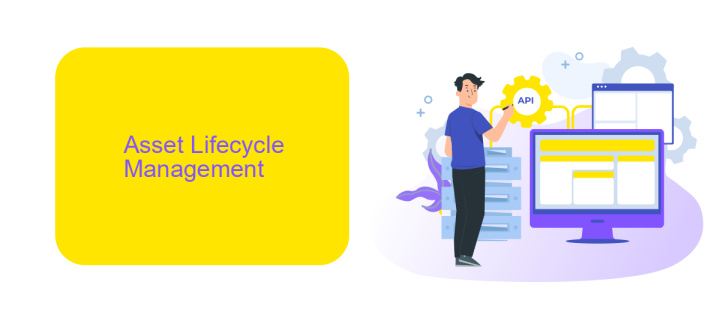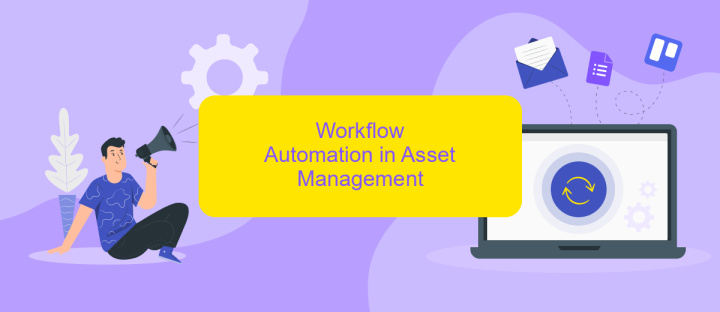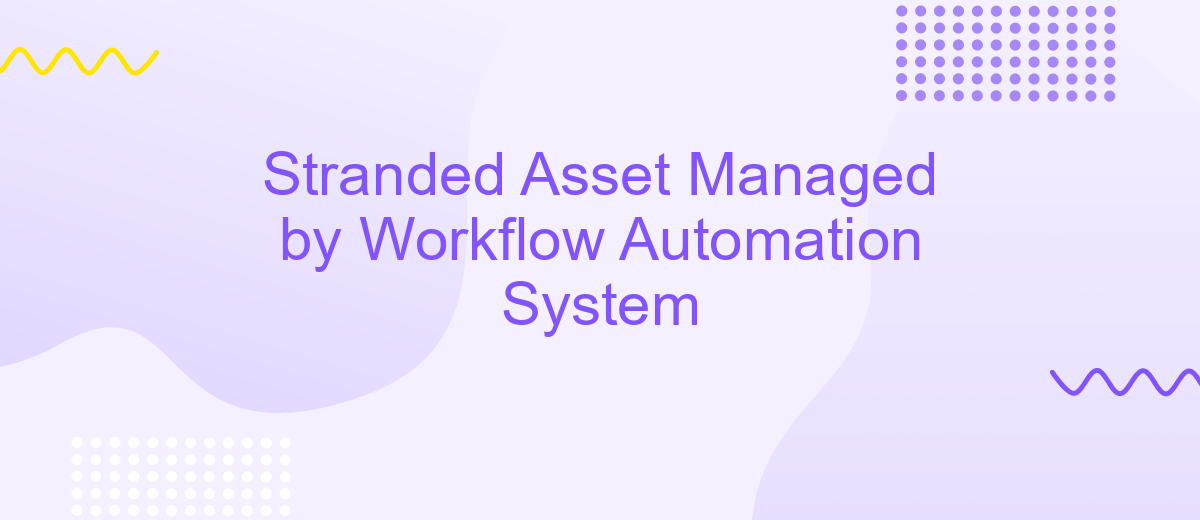Stranded Asset Managed by Workflow Automation System
In today's rapidly evolving financial landscape, stranded assets pose significant risks to investors and companies alike. Leveraging advanced workflow automation systems can transform the management of these assets, enhancing efficiency and minimizing losses. This article explores the innovative integration of automation technologies to effectively handle stranded assets, ensuring better decision-making and optimized resource allocation.
Introduction
The rapid advancement of technology has brought about significant changes in various industries, including asset management. Stranded assets, which are investments that have become obsolete or non-performing, pose a substantial risk to businesses. Managing these assets efficiently is crucial for minimizing financial losses and maximizing returns. Workflow automation systems have emerged as a powerful solution to address this challenge, enabling organizations to streamline processes and enhance decision-making.
- Automated data collection and analysis
- Real-time monitoring and reporting
- Integration with existing systems and tools
- Enhanced compliance and risk management
One of the key components of a successful workflow automation system is its ability to integrate seamlessly with other services. Platforms like ApiX-Drive facilitate these integrations by offering a user-friendly interface and robust API connections. This enables organizations to connect various tools and systems, ensuring a cohesive and efficient asset management process. By leveraging such technologies, companies can better manage their stranded assets, reduce operational costs, and improve overall performance.
Asset Lifecycle Management

Effective asset lifecycle management is crucial for maximizing the value and minimizing the risks associated with stranded assets. This involves a comprehensive approach to monitoring, maintaining, and optimizing assets from acquisition to disposal. By leveraging workflow automation systems, organizations can streamline processes, reduce manual errors, and ensure compliance with regulatory requirements. Automation tools provide real-time data and analytics, enabling proactive decision-making and timely interventions to extend asset life and enhance performance.
Integrating various systems and data sources is essential for a holistic view of asset health and performance. Services like ApiX-Drive facilitate seamless integration between different platforms, allowing for the efficient transfer of data and synchronization of processes. This integration capability ensures that all stakeholders have access to accurate and up-to-date information, fostering collaboration and informed decision-making. By utilizing such advanced tools, organizations can effectively manage the entire asset lifecycle, ultimately reducing costs and increasing operational efficiency.
Workflow Automation in Asset Management

Workflow automation plays a crucial role in modern asset management by streamlining processes and enhancing efficiency. Automated workflows help manage stranded assets by reducing manual intervention and ensuring timely actions. This not only minimizes operational risks but also optimizes resource allocation.
- Identify critical asset management tasks that can be automated.
- Implement workflow automation tools to handle repetitive tasks.
- Use integration platforms like ApiX-Drive to connect various systems seamlessly.
- Monitor and analyze automated workflows to ensure continuous improvement.
- Regularly update and refine automated processes based on performance data.
By leveraging workflow automation, asset managers can focus on strategic decision-making rather than routine tasks. Integration services like ApiX-Drive facilitate the synchronization of different systems, ensuring that data flows smoothly and operations remain uninterrupted. This holistic approach not only enhances productivity but also ensures that stranded assets are managed effectively and efficiently.
Stranded Asset Management

Stranded asset management involves the identification, evaluation, and mitigation of assets that have lost their value or utility due to various factors such as regulatory changes, market shifts, or technological advancements. Effective management of these assets is crucial to minimize financial losses and optimize resource allocation within an organization.
One of the key strategies in stranded asset management is the implementation of workflow automation systems. These systems streamline the process of identifying and handling stranded assets, ensuring timely decision-making and efficient resource utilization. By integrating with various data sources and tools, workflow automation systems provide a comprehensive view of asset performance and potential risks.
- Automated asset tracking and monitoring
- Real-time data analysis and reporting
- Seamless integration with existing systems
- Proactive risk management and mitigation
Services like ApiX-Drive can further enhance stranded asset management by facilitating seamless integration with various applications and data sources. ApiX-Drive allows organizations to automate workflows and data transfer between different platforms, ensuring that all relevant information is accurately captured and analyzed. This level of automation and integration is essential for effective stranded asset management in today's dynamic business environment.
Conclusion
The integration of workflow automation systems in the management of stranded assets has proven to be a pivotal advancement in optimizing efficiency and reducing operational costs. By automating routine tasks and streamlining complex processes, organizations can better allocate resources, mitigate risks, and enhance decision-making capabilities. The ability to seamlessly integrate various systems and data sources ensures that information is accurately captured and utilized, leading to more informed strategies and sustainable asset management.
Moreover, leveraging services like ApiX-Drive facilitates the seamless integration of diverse applications, allowing for real-time data synchronization and improved communication across different platforms. This not only simplifies the automation process but also enhances the adaptability and scalability of asset management solutions. As technology continues to evolve, the adoption of workflow automation systems will remain crucial for organizations aiming to maintain a competitive edge and achieve long-term sustainability in managing stranded assets.
FAQ
What is a stranded asset in the context of workflow automation?
How can workflow automation help manage stranded assets?
What are the benefits of using a workflow automation system for managing stranded assets?
How do I integrate my existing systems with a workflow automation platform?
What are some common challenges in managing stranded assets with workflow automation?
Routine tasks take a lot of time from employees? Do they burn out, do not have enough working day for the main duties and important things? Do you understand that the only way out of this situation in modern realities is automation? Try Apix-Drive for free and make sure that the online connector in 5 minutes of setting up integration will remove a significant part of the routine from your life and free up time for you and your employees.

